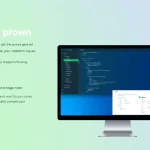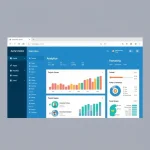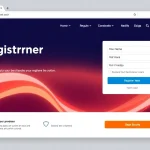Understanding Market Research Data Collection
What is Market Research Data Collection?
Market research data collection is the systematic process of gathering and analyzing data about consumers, competitors, and the market itself. This approach involves two main types of data: quantitative, which includes numerical data that can be measured and analyzed statistically, and qualitative, which includes descriptive data that provides insights into consumer behaviors and motivations. The objective of this data collection is to comprehend consumer preferences, market trends, and various external factors that can affect a business’s performance. By leveraging various methods of market research data collection, companies can make informed decisions that align with consumer needs and market demand.
Importance of Data Collection in Market Research
The significance of data collection in market research cannot be overstated. It serves as the foundation for businesses aiming to optimize their strategies and foster growth. Through effective data collection, businesses can:
- Understand Consumer Needs: Gaining insights into what drives consumer purchasing decisions helps in tailoring products and services accordingly.
- Identify Market Trends: Recognizing shifts in consumer behavior and preferences allows businesses to adapt and stay competitive.
- Minimize Risks: Data-driven decision-making reduces uncertainty when launching new products or entering new markets.
- Enhance Customer Engagement: Understanding customer sentiments and feedback provides a roadmap for improving customer relationships and retention.
- Support Innovation: Continuous data collection can lead to new ideas for product development and improvement based on consumer feedback.
Key Terminology in Market Research Data
Familiarity with essential terminology enhances understanding and communication within market research. Here are some key terms:
- Primary Research: Data collected firsthand for a specific purpose, such as surveys or interviews.
- Secondary Research: Using pre-existing data that has already been collected, such as academic studies or market reports.
- Sample Size: The number of participants in a study, which influences the reliability of the results.
- Data Analysis: The process of inspecting, cleaning, transforming, and modeling data to discover useful information and support decision-making.
- Statistical Significance: A mathematical determination of whether the observed results are likely to be due to something other than chance.
Types of Market Research Data Collection Methods
Surveys: Gathering Insights from Consumers
Surveys are one of the most commonly employed methods in market research. They can be conducted via various formats, including online platforms, telephone interviews, or paper questionnaires. Surveys allow researchers to collect a large volume of data from a diverse audience efficiently. Key considerations for effective surveys include:
- Question Design: Questions should be clear, concise, and relevant to avoid confusion and ensure accurate responses. Open-ended questions can provide deeper insights, while closed-ended questions allow for easier quantitative analysis.
- Sampling Techniques: Employing random sampling can deliver a representative subset of the population, reducing bias.
- Response Rate: Strategies such as offering incentives or ensuring anonymity can increase participation rates.
Interviews: Deep Diving into Customer Perspectives
Interviews provide an opportunity for in-depth exploration of consumer attitudes and experiences. This qualitative data collection method involves direct interaction between researchers and participants, allowing for dynamic conversations. Interviews can be structured, semi-structured, or unstructured:
- Structured Interviews: Follow a fixed set of questions, ensuring consistency across interviews but potentially limiting conversational depth.
- Semi-structured Interviews: Combine predefined questions with the flexibility to explore interesting topics that arise during the discussion.
- Unstructured Interviews: Focus on conversation without a fixed agenda, enabling deep personal storytelling and insight gathering.
Focus Groups: Collaborative Insights
Focus groups involve guided group discussions where participants express their opinions about a product, service, or concept. This method capitalizes on group dynamics, revealing diverse perspectives and generating ideas that may not surface in one-on-one interviews. Successful focus groups require:
- Skilled Moderators: Moderators should facilitate discussions effectively, balance participation among members, and keep conversations on track.
- Diverse Groups: A mix of demographics and familiarity with the topic can provide richer insights.
- Clear Objectives: Defining what the research aims to achieve will guide the discussion and data analysis.
Best Practices for Effective Data Collection
Designing Effective Surveys and Questionnaires
A well-crafted survey can significantly increase the relevance and quality of the data collected. Best practices include:
- Clear Objectives: Define what you want to learn, ensuring each question aligns with these goals.
- Logical Structure: Organize questions coherently to guide respondents, starting with easy questions and gradually moving to more complex issues.
- Pre-testing: Conduct a pilot survey to identify potential issues before launching the full study.
Choosing the Right Audience for Research
Identifying and targeting the appropriate audience demographic is critical for gathering relevant data. Key factors include:
- Defining Target Segments: Using market segmentation can help tailor data collection to specific consumer groups.
- Accessing Diverse Pools: Online platforms and social media can help reach various demographic segments effectively.
- Ensuring Representativeness: Utilizing random sampling techniques can ensure your data accurately reflects the larger population.
Utilizing Technology for Enhanced Data Gathering
Advancements in technology have revolutionized the way market research data is collected. Utilizing technology can enhance efficiency and accuracy. Options include:
- Online Survey Tools: Platforms such as SurveyMonkey or Google Forms simplify design, distribution, and reporting.
- Data Analytics Software: Tools like Tableau and SPSS empower researchers to analyze data effectively, turning raw data into actionable insights.
- Mobile Surveys: Increasingly common in a mobile-driven world, mobile surveys enable real-time feedback collection from users on the go.
Challenges in Market Research Data Collection
Addressing Bias in Data Collection
Bias can lead to skewed results, detracting from the validity of your research. Common types of bias include:
- Selection Bias: Occurs when the sample is not representative of the target population; to mitigate this, use random sampling techniques.
- Response Bias: Arises when respondents provide inaccurate answers; designing neutral questions can reduce this effect.
- Confirmation Bias: Tendency to favor data supporting preconceived notions; researchers should consciously seek contradictory evidence.
Overcoming Data Privacy Concerns
In an era where data privacy is paramount, researchers must address concerns related to confidentiality and ethical data collection. Best practices include:
- Transparency: Clearly communicate how data will be used and stored ensures trust among participants.
- Compliance: Adhere to relevant laws and regulations, such as GDPR, dictating how personal information should be collected and protected.
- Anonymization: Eliminating personally identifiable information (PII) can enhance participant confidentiality.
Maintaining Data Quality and Relevance
High-quality data is essential for sound decision-making. Strategies for maintaining data quality include:
- Regular Auditing: Periodically reviewing data collection processes and results can help identify issues affecting quality.
- Training Researchers: Providing ongoing training ensures that researchers understand best practices for data collection and analysis.
- Continuous Feedback Loops: Implementing feedback mechanisms allows companies to refine data collection methods over time.
Measuring the Success of Your Data Collection Efforts
Key Performance Indicators for Data Collection
Measuring the effectiveness of data collection efforts involves evaluating several key performance indicators (KPIs), such as:
- Response Rates: High response rates indicate successful outreach and engagement strategies.
- Data Accuracy: Comparing collected data against known benchmarks can measure accuracy and reliability.
- Time to Insight: Assessing how long it takes to analyze and report data can help identify process efficiencies.
Analyzing Results for Strategic Decisions
The analysis phase is as crucial as data collection itself. Techniques for effective analysis include:
- Quantitative Analysis: Employing statistical methods to identify patterns and relationships in numerical data.
- Qualitative Analysis: Thematic analysis of qualitative data helps extract insights from open-ended responses.
- Visualization: Using charts and graphs to illustrate findings can enhance comprehension and decision-making.
Iterating on Feedback for Future Research
Ongoing improvement is vital in market research. After analyzing data, consider:
- Post-Mortem Analysis: Reflecting on what worked and what didn’t can inform future studies.
- Continuous Innovation: Experimenting with new methods or technologies can lead to better data collection practices.
- Staying Informed: Keeping abreast of trends in market research allows businesses to adapt their methods over time.








